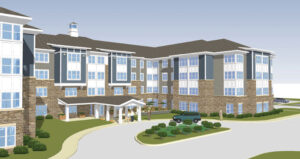Today there are currently over 835,000 people living in senior living facilities in the United States. There are over 30,000 assisted living facilities and nearly 60 percent are over 17 years old with many 25 years and older. Considering this high degree of obsolescence, along with a senior population that will double in size in the coming decades, there is a significant opportunity for upgrading the existing senior living stock in America. There are newer communities in many markets, each providing more services and amenities tapping into America’s active lifestyle. With the baby boomers on their way, it is critical that existing communities adapt to the evolving desires and expectations of seniors and their families.
Changing Expectations Among Seniors
Americans have continually built more and more social and entertainment options into the American lifestyle. To appeal to today’s seniors, it’s important to understand their desires and expectations.
From dining and entertainment, shopping and fitness to services and care, the open market is built for the active lifestyle, for freedom and choice. To build relevancy and increase marketability, existing senior living communities must be reprogrammed and upgraded to relate to the new preferences and social values founded in the American lifestyle.
Consider the next-generation senior, one accustomed to a service-rich society full of opportunities for social engagement and retail experiences. The next-generation senior is more socially and digitally connected, will work later in life and has less financial means for retirement than the preceding generations. They have a higher lifestyle demand for fitness, wellness, culinary options and technology. They want larger living spaces, more services, and entertainment options, all in an era when financial means for retirement is in decline.
To support a strategic and successful realignment or remodeling effort existing communities must build to respond to a new set of desires and expectations. Current and future residents want to thrive, to lead an exciting life, to be in vibrant environments, participate in social events and be connected to a healthy culture and lifestyle.
Updating the Process and Checklist
Older senior living communities are compelled to reposition the existing physical plant to enhance market desirability and viability. Let’s examine a few strategies for today’s successful repositioning:
•Market analysis. Know your market, current and future drivers and where your competition is heading, and the economics of your target market.
•Financial analysis and proforma. Have an in-depth understanding of financial parameters and create a realistic budget for building construction and physical enhancements.
•Operating proforma. Examine current operational drivers. Update the management and operations plan to create staffing and labor efficiency.
•Social interaction initiatives. Social involvement is imperative to healthy living. Explore and implement opportunities to partner with local businesses to create new and exciting social events.
•Wellness initiatives. Wellness, fitness and the active lifestyle are the new standards for excellence. Assure that your program includes best practices and discoveries in wellness.
•Community integration initiatives. Social engagement extends beyond the walls and direct interaction and integration with the local community are imperative for marketability. Explore and implement opportunities to partner with local businesses to expand offerings and social activities.
•Culinary initiatives. Provide multiple dining venues, 24-hour dining opportunities and embrace the dining and retail trends found on Mainstreet America.
•Active lifestyle initiatives. Fitness and outdoor activities should be leveraged for not just health and wellness but for entertainment, social gathering, and local community participation.
•Technology initiatives. Technology including app-based services that expand opportunities for social engagement and services are increasingly important to today’s senior consumer. Technology will continue to gain importance among the senior population.
• Health services and care. Telemedicine and digital care services have become the baseline. Existing facilities must have their eye on future health care technologies and best practices for user experience.
• Indoor-outdoor connections. Large windows for natural light, access to the outdoors and nature, meaningful, programmable outdoor activity spaces and outdoor fitness and walking trails are ranked high on today’s senior wishlist. Assure that your program includes the development of outdoor site amenities.
The Real Payback
There are nearly 65 million baby boomers, many just starting to consider senior living options. Those who chose to move into a senior living community will have many options to choose from, new, old and in between. Many will compete on cost, all will provide levels of care, however, the ones who provide higher levels of social engagement, multidimensional wellness programs, and progressive consumer-driven indoor and outdoor dining and entertainment choices will be strategically positioned for success through the boomer years and the following generations. Repositioning best practices are more than market studies, goals and objectives, they’re strategic implementations for market relevancy.
Featured in the January issue of Health Care Properties Quarterly – Johnathan Sims, AIA Principal, Lantz-Boggio






